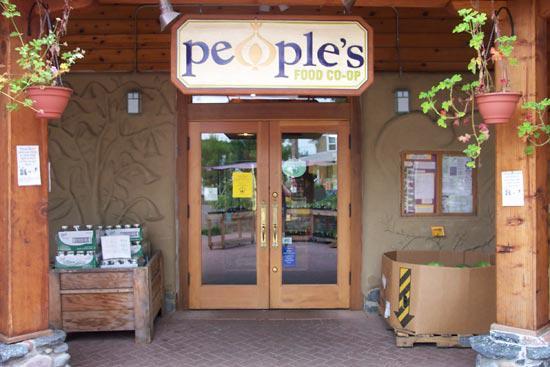How to Start a Food Co-op

Based on An Online Guide to Starting a Food Co-op by the Cooperative Grocers Information Network
In the sharing economy, new and innovative business models are being developed for everyday needs like housing, work and transportation; think car sharing, bike-sharing, co-working, and Airbnb.
But one of oldest and tested sharing business models is the humble grocery co-op. Grocery co-ops have been around since 1864, when the first co-op was established in Rochdale, United Kingdom in response to the vagaries of the Industrial Revolution.
The first co-ops in the United States were established in colonial times. American co-ops have developed in multiple waves over the centuries, often in response to economic downturns, according to the National Cooperative Grocers Association.
A co-op is a business that is driven by cooperative values as well as profit. The original Rochdale pioneers set forth a set of seven principles, which have been adopted by the International Co-operative Alliance (ICA) and govern co-op operations to this day.
As defined by the ICA, a cooperative is “an autonomous association of persons united voluntarily to meet their common economic, social, and cultural needs and aspirations through a jointly-owned and democratically-controlled enterprise.”
The Cooperative Grocer’s Network published An Online Guide to Starting a Food Co-op in March 2002 outlining nine steps to forming a grocery co-op. The report details extensive resources and case study examples.
The following is a condensed summary of the nine steps:
Step One: Gather background information
This step involves familiarizing yourself with the co-op business model, understanding local and regional resources, business costs like space, utilities, and regulatory issues, and most importantly, understanding the needs of the community the co-op will serve, how a co-op might serve as a solution to those needs, and if there is interest in pursuing a co-op solution.
Step Two: Organize
At this step, a meeting is held to evaluate whether sufficient interest exists to justify starting a new co-op. Now is the time to hold multiple informational meetings in the community to gather input. It’s a good idea to invite experts to share their knowledge of co-op operations. If there is enough interest to warrant moving forward, a steering committee is developed through a consensus process.
Step Three: Research feasibility
This step involves studying whether or not a co-op can be both successful from a business standpoint s well as beneficial to its members. A feasibility analysis includes surveying potential members, understanding the operations of similar organizations, identifying funding sources, and identifying resources and partners. Professional consultants may be useful in this process. A final feasibility analysis should include a market capacity analysis, internal capacity, financial needs and options, and the feasibility of design and project specifics.
Step Four: Review findings and vote to incorporate
The feasibility analysis prepared in step three is presented to a meeting of potential members and a vote is held to incorporate. If the vote is successful, articles of incorporation are drafted, voted on, and filed with the appropriate governmental agency. At this time, a formal board of directors is selected and other functional roles assigned.
Step Five: Recruit members
In this step, a membership structure is selected and the participation and financial commitment of members is secured. Goals and deadlines for number of members, equity, and loans must be set and tracked. Visual aids to show progress are helpful at this stage.
Step Six: Develop Business Plan
A specific and detailed business plan and financial model are constructed in this phase, describing all operations, employees, management structure, products, customers, capitalization, and projections for revenue and costs.
Step Seven: Secure financing
The first source of base financing is members, who may loan or invest in the co-op as part of their membership. Other alternatives may include grants, commercial loans, private investment, and vendor financing. Lenders should be made to clearly understand the implications of the cooperative ownership structure. Contact with local economic development agencies may identify governmental incentives, such as tax incentives, that can be included as part of the financing package.
Step Eight: Begin operations
The business plan should guide all aspects of this phase, in which a space and equipment is secured, a store is set up, accounts with vendors are established, and a manager is hired.
Step Nine: Open the doors
Hold two grand openings—a soft opening to de-bug operations, and a highly publicized grand opening with a ribbon cutting and special events. The first year is usually rough, so plan on a nine-month board retreat to assess operations.
The Cooperative Grocer's Network lists 362 grocery co-ops in existence in the United States and Canada. Grocery co-ops are entering the mainstream, as health-conscious consumers demand more knowledge of where their local food is coming from, according to a recent Aspen Times article. As Yes! Magazine reports, cooperative businesses across multiple sectors—food, banking, health insurance, even steel-making—are on the rise, partly in response to people’s disillusionment with big business in the wake of the Great Recession. The grocery co-op provides a time-tested alternative business model to the industrialized food system that can both build community and empower individuals.
https://www.youtube.com/embed/KYPe5xJAm5w
by Nina Misuraca Ignaczak of Sharable







